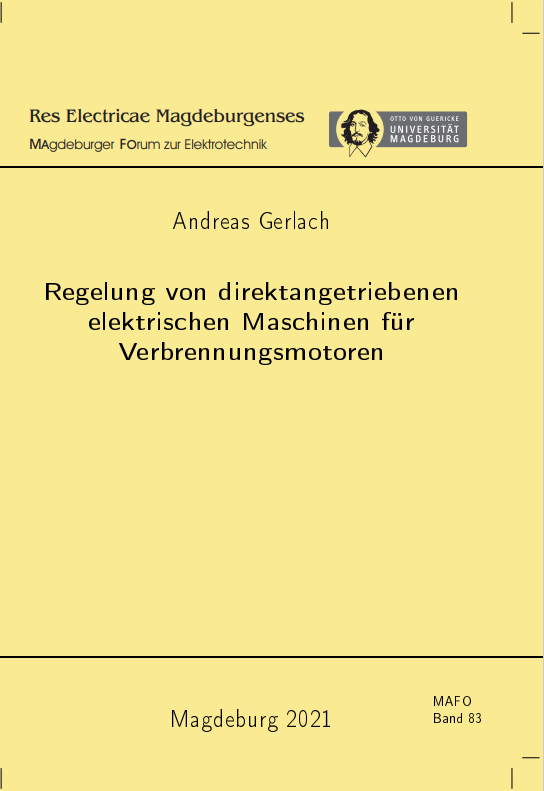Regelung von direktangetriebenen elektrischen Maschinen für Verbrennungsmotoren
DOI:
https://doi.org/10.24352/UB.OVGU-2021-056Keywords:
Regelung, Elektrische Maschine, Verbrennungsmotor, FreikolbenmotorAbstract
This work deals with the control of electrical machines that are directly coupled to an internal combustion engine. At the beginning, some basics for the control of permanently excited synchronous machines and the functioning of four-stroke
gasoline engines are explained. This is followed by the various test setups that were used in this work to validate various average and dynamics-based control procedures. The average value-based control methods include methods that do not require a highly dynamic change in torque within the four cycles of the internal combustion engine. This includes throttle actuator-free power control. The system is nonlinear. To control the system, it was linearized on the one hand by using a Taylor
approximation and on the other hand by using a feedback linearization. A controller could then be designed for the linearized system. Another control method, based on average values, is the control without an angle encoder. Here, angle estimation
methods for the PMSM were used to estimate the electrical angle and the torque of the internal combustion engine, which is compared with a theoretical compression torque in order to reference the crank angle to the electrical angle.
The dynamics-based control methods are methods that change the torque / force curve of the electrical machine significantly within the four cycles. This makes it possible, among other things, to adapt the piston stroke in an internal combustion
engine with a crankshaft and in a free piston engine. In addition, the injection of a highly dynamic torque on a camshaft can be used to adjust the valve timing. High control dynamics are also necessary when an almost constant speed is required. For
this, a torque must be applied, which compensates the torque of the internal combustion engine. This is known as torque damping / compensation. Different torque damping methods were tested and the results compared according to implementation effort and required sensors.
Downloads
Published
Issue
Section
License
Copyright (c) 2021 Res Electricae Magdeburgenses. Magdeburger Forum zur Elektrotechnik

This work is licensed under a Creative Commons Attribution-ShareAlike 4.0 International License.

